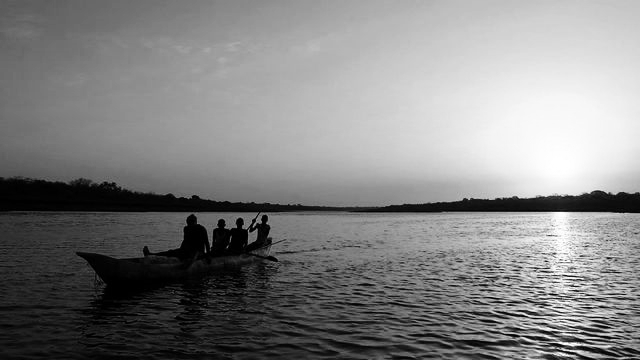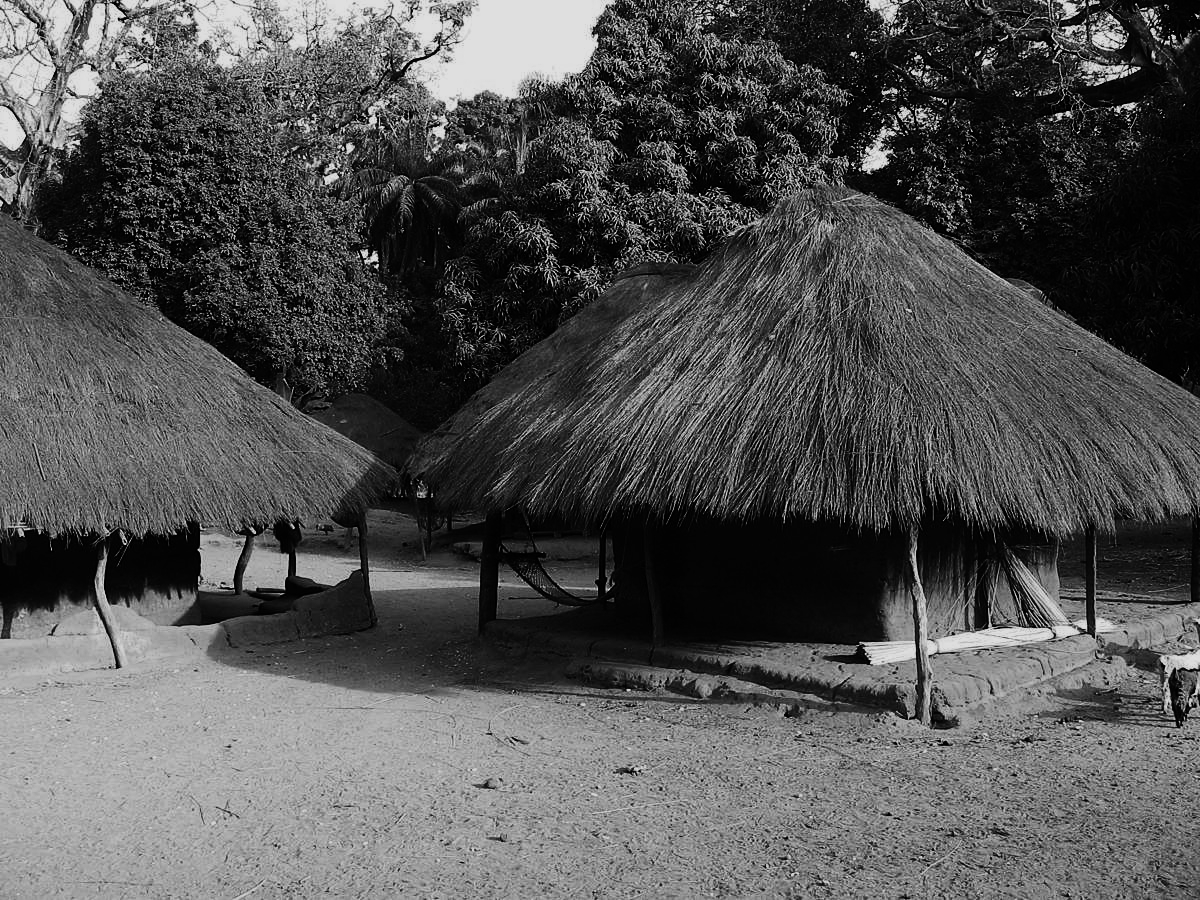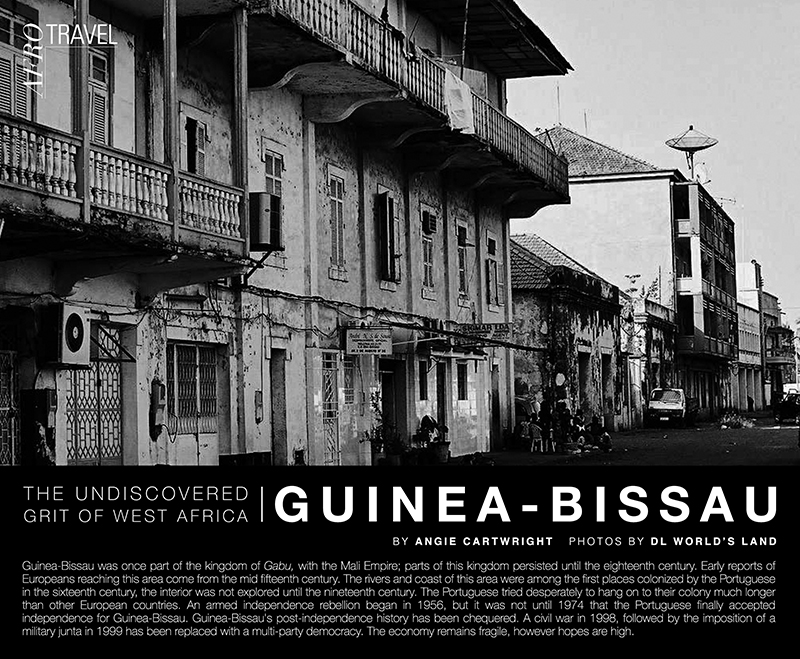The Undiscovered Gem of West Africa
Guinea-Bissau was once part of the kingdom of Gabu, with the Mali Empire; parts of this kingdom persisted until the eighteenth century. Early reports of Europeans reaching this area come from the mid fifteenth century. The rivers and coast of this area were among the first places colonized by the Portuguese in the sixteenth century, the interior was not explored until the nineteenth century. The Portuguese tried desperately to hang on to their colony much longer than other European countries. An armed independence rebellion began in 1956, but it was not until 1974 that the Portuguese finally accepted independence for Guinea-Bissau. Guinea-Bissau's post-independence history has been chequered. A civil war in 1998, followed by the imposition of a military junta in 1999 has been replaced with a multi-party democracy. The economy remains fragile, however hopes are high.
“…It is curious to note that this country got its namesake from its capital city to prevent confusion with its neighbor the Republic of Guinea…”
Guinea-Bissau is a small coastal country just to the South of Senegal where the people speak a host of local languages and Creole together with Portuguese and a little bit of French. Until recently, Guinea-Bissau was well off the tourist route. Struggles for independence and the civil war devastated the economy. Tourist facilities and infrastructure remain, in general, very limited but efforts have been made to encourage visitors to this undiscovered gem of West Africa. Although a relatively small country, Guinea-Bissau's beaches and wildlife are exceptional while West African traditions and Portuguese colonial remains can still be seen. On the coast, you can find fishing villages surrounded by forests, whereas further inland the country is dry and dusty.

Like many places on earth worth traveling, it is always prudent to begin one’s journey in the capital city. Bissau is an impressive rural metropolis where many of the upscale villas are built according to Mediterranean architecture. The colonial-design civilization is located near the spectacular beaches of the country. One of the most interesting locations within the city is the cultural center called Pidjiguiti. It is curious to note that this country got its namesake from its capital city to prevent confusion with its neighbor the Republic of Guinea. The Museum of Artefacts is one of the top tourist attractions in Guinea-Bissau and a perfect place for scholarly travelers to visit. This is one of the ideal places to get an intimate glimpse of the country’s history. But the genuine works of art displayed in this museum shows a more humanist side of this West African nation – something that goes beyond the parameters of academic knowledge. Items like traditional pottery, weaving, sculpture and basket-ware comprises the artistic talent of the craftsmen in the ancient Kingdom of Gabu.
“…. The Museum of Artefacts is one of the top tourist attractions in Guinea-Bissau and a perfect place for scholarly travelers to visit. This is one of the ideal places to get an intimate glimpse of the country’s history…”
The islands off the coast of Guinea-Bissau- The Bijagos Archipelago Islands are of exceptional beauty. These islands are home to a group of indigenous people. Turtles, sharks, manatees, and a very special and very rare form of hippopotamus that lives mostly in salt-water can all be seen here at the unspoiled islands. Many islands have French-owned fishing lodges. For those willing to go off the beaten track, Guinea-Bissau has a lot going for it. Just South of Cap Skirring, but on the Guinea-Bissau side of the border, is a tour de force to get to Varela; a thirty-one mile long bumpy dirt road from São Domingos. However, it is all rewarded when one reaches this little paradise, with a superb Italian-owned hotel, beautiful beaches, pine forests and a very relaxed atmosphere with almost no other tourists.

The Bolama Bubaque is the region in Guinea-Bissau that features the more intimate glimpse of the country’s ancient past. No stronger evidence of a nation’s ancient culture is more compelling than its ruins. The ancient architectural debris of Bolama Bubaque is a sacred place that ideally resisted colonial power up until this day. It is located within a picturesque natural terrain of the country. It is quite unfortunate that this site lacks accommodations, but it remains an ideal camping site for a more rugged type of curious tourists. If eco-tourism is the game, then the famous national parks remain as the top tourist attractions in Guinea-Bissau. The Archipel de Bolama, located near the ancient ruin complex, is designated as one of the UNESCO MAB Biosphere Reserves. There are also well-known wildlife sanctuaries such as Ilhas de Orango and Ilhas de Dulombi. Lastly, the Parc Naturael des Mangroves de Cacheu is among the most recommended natural reservations worth touring around. Wildlife explorers will truly have a good time. So if you wish to understand more of this hidden gem of Africa and its history, plan a trip to Guinea Bissau with family or friends. Contact a professional tour operator or the Department of Tourism to know more about the country and the best time to travel for the tours, festival and events. Have a Great Trip to Guinea Bissau!!




